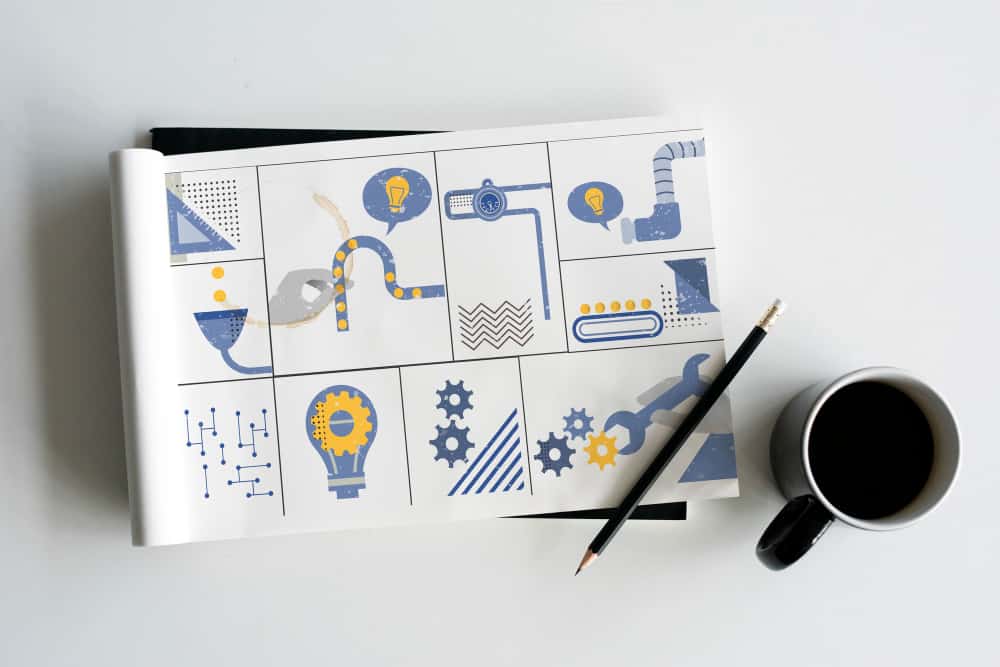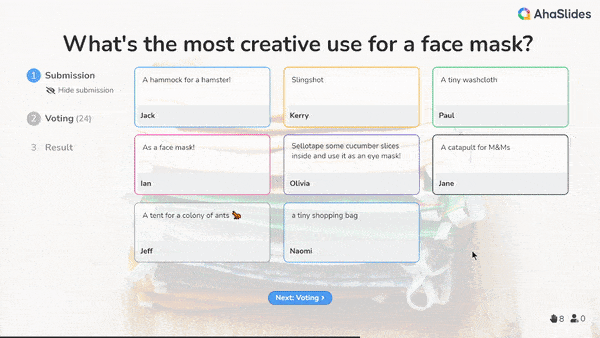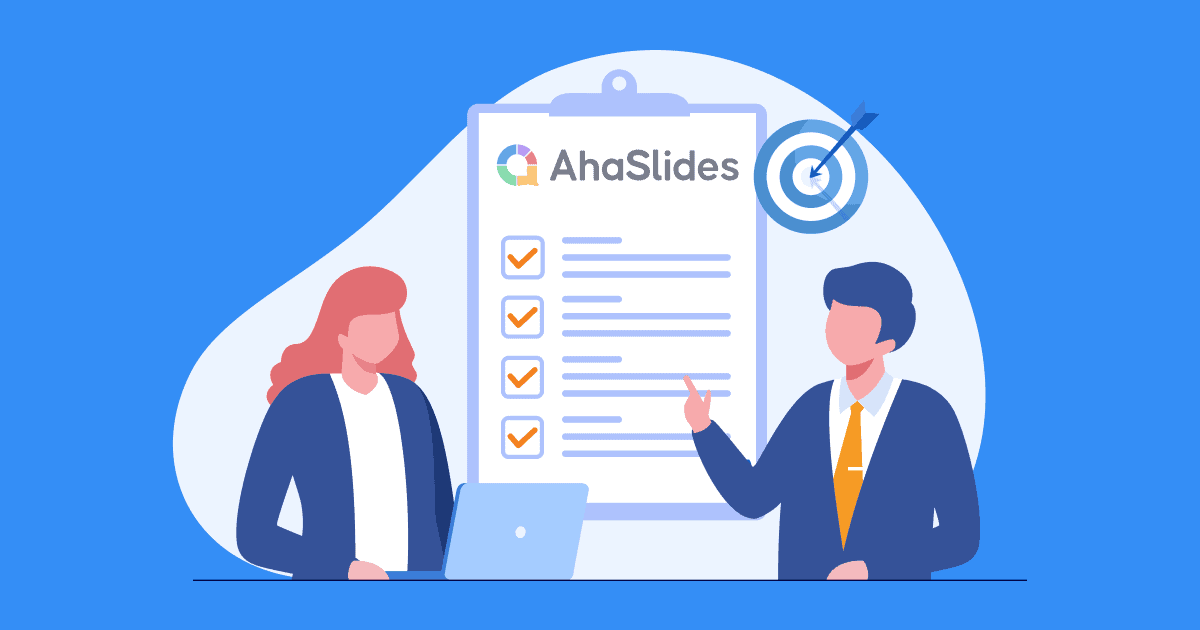有沒有感覺未來完全不可預測?
看過《回到未來2》的人都知道,預測未來並非易事。但有些有遠見的公司卻有自己的一套秘訣──情境規劃。
正在尋找情境規劃範例?今天,我們將一窺情境規劃的幕後運作,並探索 情景規劃示例 在不可預測的時代蓬勃發展。
目錄
提高參與度的技巧
什麼是情景規劃?

想像一下,你是電影導演,正在籌劃下一部賣座大片。太多變數會影響最終結果——主演會受傷嗎?特效預算被削減怎麼辦?無論生活如何,你都希望這部電影能夠成功。
這就是場景規劃的用武之地。您不要僅僅假設一切都會完美進行,而是想像事情如何發展的幾種不同的可能版本。
也許你的明星在拍攝的第一周就扭傷了腳踝。 在另一個例子中,特效預算被削減了一半。 更清楚地了解這些替代現實可以幫助您做好準備。
你要製定應對各種情況的策略。如果主角受傷,你還要準備好後備拍攝計畫和替補演員的安排。
方案規劃 為您提供同樣的業務遠見和靈活性。 通過設想不同的可能的未來,你可以製定策略來增強韌性,無論你遇到什麼。
情景規劃的類型
組織可以使用幾種類型的方法來進行場景規劃:

• 定量場景: 通過改變有限數量的變量/因素來允許最好和最壞情況版本的財務模型。 它們用於年度預測。 例如,基於 +/- 10% 銷售增長的最佳/最差情況收入預測或使用高/低價材料等可變成本的費用預測
• 規範場景: 描述首選或可實現的最終狀態,更多地關注目標而不是目標規劃。 它可以與其他類型組合。 例如,在新產品類別中實現市場領先地位的 5 年情景或概述滿足新標準的步驟的監管合規情景。
• 戰略管理場景: 這些「另類未來」關注的是產品/服務的消費環境,需要對產業、經濟和世界有更廣闊的視野。例如,在一個成熟的行業情境下,顛覆性的新技術正在改變客戶需求;在一個全球經濟衰退情境下,主要市場的需求減少;或在一個能源危機情境下,需要尋找和保護替代資源。
• 運營場景: 探索事件的直接影響並提供短期戰略影響。 例如,工廠停工場景規劃生產轉移/延遲或自然災害場景規劃 IT/運營恢復策略。
場景規劃過程和示例
組織如何創建自己的情景計劃? 通過以下簡單步驟找出答案:
#1. 集思廣益未來場景

在確定焦點問題/決策的第一步中,您需要明確定義有助於提供資訊的核心問題或決策場景。
這個問題應該足夠具體,以指導情景開發,但也應足夠廣泛,以允許探索不同的未來。
常見的焦點問題包括競爭威脅、監管變化、市場變化、技術中斷、資源可用性、產品生命週期等—— 與您的團隊進行頭腦風暴 盡可能多地表達想法。
探索無限的想法 啊哈幻燈片
AhaSlides 的腦力激盪功能可幫助團隊將想法轉化為行動。

評估最不確定和最有影響力的因素 策略計劃 在預期的時間範圍內。 從各個職能部門獲取意見,以便該問題能夠反映整個組織的不同觀點。
設置參數,例如感興趣的主要結果、分析邊界以及場景如何影響決策。
根據早期研究的需要重新審視和完善問題,以確保情景能夠提供有用的指導。
💡 具體焦點問題示例:
- 收入成長策略-我們應該關注哪些市場/產品才能在未來15年內實現20-5%的年銷售成長?
- 供應鏈彈性-我們如何在經濟衰退或國家緊急情況下減少中斷並確保持續供應?
- 科技採用-未來 10 年,顧客對數位服務的偏好轉變將如何影響我們的商業模式?
- 未來的勞動力-未來十年我們需要什麼樣的技能和組織結構來吸引和留住頂尖人才?
- 永續發展目標-哪些情境能讓我們在保持獲利能力的同時到 2035 年達到淨零排放?
- 併購-到 2025 年,我們應該考慮收購哪些互補公司來實現收入來源多元化?
- 地理擴張—到 2 年,哪 3-2030 個國際市場將提供最佳的獲利成長機會?
- 監管變化-新的隱私權法或碳定價將如何影響我們未來五年的策略選擇?
- 產業顛覆-如果低成本競爭對手或替代技術在 5 年內大幅侵蝕市場佔有率會怎麼樣?
#2。分析場景

您需要忽略每個場景對所有部門/職能的影響,以及它將如何影響營運、財務、人力資源等。
評估每種情況可能給企業帶來的機遇和挑戰。 哪些戰略選擇可以降低風險或利用機遇?
確定每種情況下可能需要修正方向的決策點。 哪些跡象表明轉向不同的軌跡?
根據關鍵績效指標繪製場景,以盡可能定量地了解財務和運營影響。
集思廣益,討論場景中潛在的二階效應和級聯效應。 隨著時間的推移,這些影響將如何在商業生態系統中產生反響?
進行 壓力測試 敏感性分析 評估情境的脆弱性。哪些內在/外在因素可能會顯著改變情境?
根據現有知識討論每個場景的概率評估。 哪種可能性相對更大或更小?
記錄所有分析和影響,以便為決策者達成共識。

💡場景分析示例:
情景 1:新市場進入者導致需求增加
- 每個地區/客戶群的收入潛力
- 額外的生產/履行能力需求
- 營運資金要求
- 供應鏈可靠性
- 按角色招聘需求
- 生產過剩/供應過剩的風險
情景2:關鍵材料成本兩年內翻倍
- 每個產品線的可行價格上漲
- 成本削減策略的有效性
- 客戶保留風險
- 供應鏈多元化選擇
- 尋找替代品的研發重點
- 流動性/融資策略
場景 3:新技術對行業的顛覆
- 對產品/服務組合的影響
- 所需的技術/人才投資
- 競爭應對策略
- 定價模式創新
- 獲取能力的合作/併購選項
- 顛覆帶來的專利/知識產權風險
#3。 選擇領先指標

領先指標是可以表明某種情況是否可能比預期更早展開的指標。
在總體場景結果明顯之前,您應該選擇能夠可靠地改變方向的指標。
考慮銷售預測等內部指標以及經濟報告等外部數據。
為觸發加強監控的指標設置閾值或範圍。
分配責任來根據場景假設定期檢查指標值。
確定指標信號和預期場景影響之間的適當提前時間。
制定流程來集體審查指標以確認場景。 單一指標可能不是決定性的。
對指標追蹤進行測試運行,以改善提供最可操作的警告訊號的指標,並平衡早期預警的願望與指標的潛在「誤報」率。
💡領先指標示例:- 經濟指標-GDP成長率、失業率、通貨膨脹率、利率、新屋開工率、製造業產出
- 產業趨勢-市場佔有率變化、新產品採用曲線、投入/材料價格、顧客情緒調查
- 競爭措施-新競爭對手的進入、合併/收購、價格變動、行銷活動
- 法規/政策-新立法的進展、監管提案/變更、貿易政策
#4。 制定應對策略

根據影響分析找出您希望在未來每個場景中實現的目標。
集思廣益,想出許多不同的行動方案,比如在新領域發展、削減成本、與他人合作、創新等。
選擇最實用的選項,看看它們與未來場景的匹配程度。
針對每種情況,制定詳細的短期和長期應對計劃,列出 3-5 個最佳方案。同時,要包含備用方案,以防萬一情況不如預期。
確定哪些跡象顯示你需要將每個因應措施付諸行動。評估這些因應措施在未來每種情況下的財務價值,並檢視你是否具備成功實施這些因應措施所需的條件。
💡應對策略示例:情景:經濟衰退減少需求
- 通過臨時裁員和凍結可自由支配支出來削減可變成本
- 將促銷活動轉向增值捆綁銷售以保持利潤
- 與供應商協商付款條件以實現庫存靈活性
- 對員工進行交叉培訓,以實現跨業務部門的靈活資源分配
場景:顛覆性技術迅速獲得市場份額
- 收購具有互補能力的新興初創企業
- 啟動內部孵化器計劃以開發自己的顛覆性解決方案
- 將資本支出重新分配給數字產品化和平台
- 尋求新的合作夥伴模式以擴展技術支持的服務
場景:競爭對手以較低的成本結構進入市場
- 重組供應鏈以尋找成本最低的地區
- 實施持續的流程改進計劃
- 以引人注目的價值主張瞄準利基細分市場
- 為對價格不太敏感的粘性客戶提供捆綁服務
#5。 實施計劃

為了有效執行已製定的應對策略,首先要定義執行每項行動的責任和時間表。
確保預算/資源並消除實施的任何障礙。
為需要更快速行動的應急方案製定行動手冊。
建立績效跟踪以監控響應進度和 KPI。
通過招聘、培訓和組織設計變革來培養能力。
跨職能部門溝通情景結果和相關戰略響應。
確保充分持續的情景監測和響應策略的重新評估,同時記錄通過響應實施經驗獲得的學習和知識。
💡場景規劃示例:- 一家科技公司啟動了一個內部孵化器(分配預算,分配領導者)來開發與潛在中斷場景相一致的解決方案。 6 家初創公司在 XNUMX 個月內進行了試點。
- 一家零售商對商店經理進行了應急勞動力規劃流程培訓,以便在經濟衰退情況下需求發生變化時快速削減/增加員工。 這是通過對多個需求下降模擬進行建模來測試的。
- 一家工業製造商將資本支出審查納入其月度報告週期。 籌備中的項目預算是根據情景時間表和触發點指定的。
關鍵要點
雖然未來本質上是不確定的,但情景規劃可以幫助組織戰略性地應對各種可能的結果。
通過制定多樣化但內部一致的外部驅動因素如何展開的故事,並確定每個因素的發展對策,公司可以主動塑造自己的命運,而不是成為未知曲折的受害者。
常見問題(FAQ)
情景規劃過程的 5 個步驟是什麼?
情境規劃過程的 5 個步驟是 1. 集思廣益,設想未來情境 – 2.
分析情境 –3. 選擇領先指標 –4. 制定因應策略 –5. 實施計畫。情景規劃的例子是什麼?
情景規劃的一個例子:在公共部門,疾病預防控制中心、聯邦應急管理局和世界衛生組織等機構使用情景來規劃對流行病、自然災害、安全威脅和其他危機的應對措施。
場景有哪 3 種類型?
場景的三種主要類型是探索性場景、規範性場景和預測性場景。









